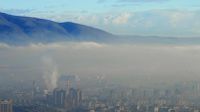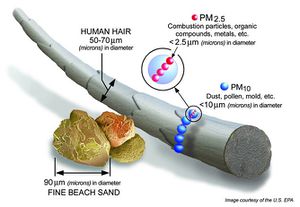ISSS608 2018-19 T1 Assign Soo Zhi Kai
|
|
|
|
|
To be a Visual Detective
Air pollution is an important risk factor for health in Europe and worldwide. A recent review of the global burden of disease showed that it is one of the top ten risk factors for health globally. Worldwide an estimated 7 million people died prematurely because of pollution; in the European Union (EU) 400,000 people suffer a premature death. The Organisation for Economic Cooperation and Development (OECD) predicts that in 2050 outdoor air pollution will be the top cause of environmentally related deaths worldwide. In addition, air pollution has also been classified as the leading environmental cause of cancer.
Air quality in Bulgaria is a big concern: measurements show that citizens all over the country breathe in air that is considered harmful to health. For example, concentrations of PM2.5 and PM10 are much higher than what the EU and the World Health Organization (WHO) have set to protect health.
Bulgaria had the highest PM2.5 concentrations of all EU-28 member states in urban areas over a three-year average. For PM10, Bulgaria is also leading on the top polluted countries with 77 μg/m3on the daily mean concentration (EU limit value is 50 μg/m3).
According to the WHO, 60 percent of the urban population in Bulgaria is exposed to dangerous (unhealthy) levels of particulate matter (PM10).
Background
View the interactive Tableau design here: Link to tableau dashboard
Before we start, what do you need to know?
1. What is Particulate Matter (PM)?
A mixture of solid particles and liquid droplets found in the air. Some of the particles, such as dust, dirt, soot or soke, are large enough to be seen with the naked eye.
Others are so small they can only be detected using an electron microscope.
PM10 :
Harmful Effects :
PM2.5 : atmospheric PM that have a diameter of less than 2.5 micrometers, which is about 3% the diameter of a human hair ]
Harmful Effects : Given the minute size, particles smaller than 2.5 micrometers are able to bypass the nose and throat and
penetrate deep into lungs or even enter the blood stream
2. The Location
3. The Time
4. The Sensors The visitors were segmented as follows based on the nature of their movements in the reserve.
The graph below shows the composition of each cluster by car types.
5. The Data
Timestamp: the date and time the sensor reading was taken
Car-id: the assigned car ID from the entry gate
Car-type: Vehicle type as enumerated above. “P” is appended when it is a park vehicle
Gate-name: name of the sensors taking the reading. See the map
6. The Reserve Map

